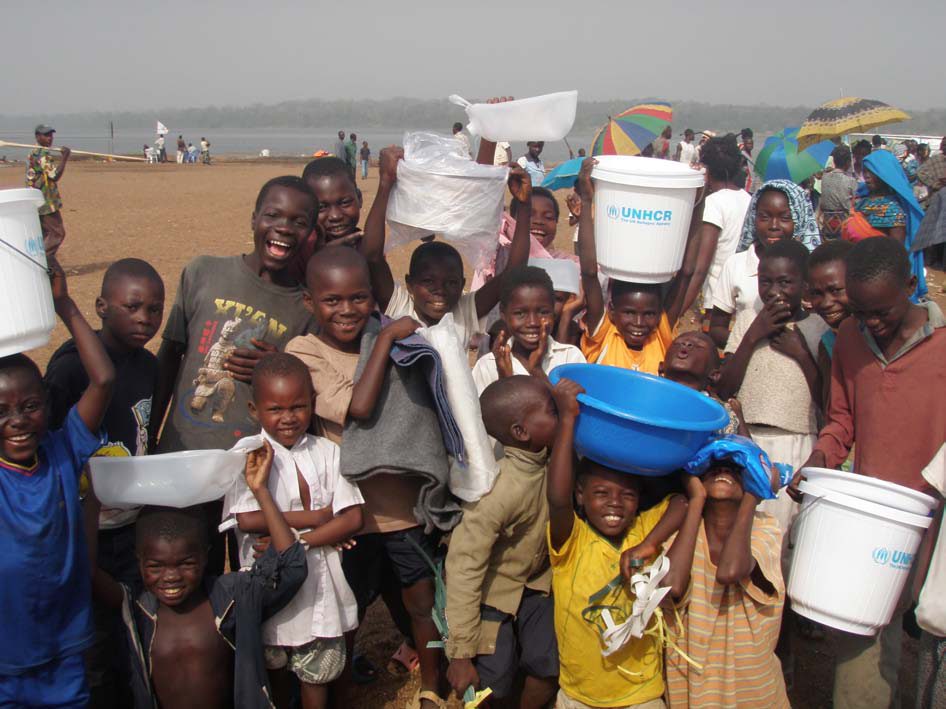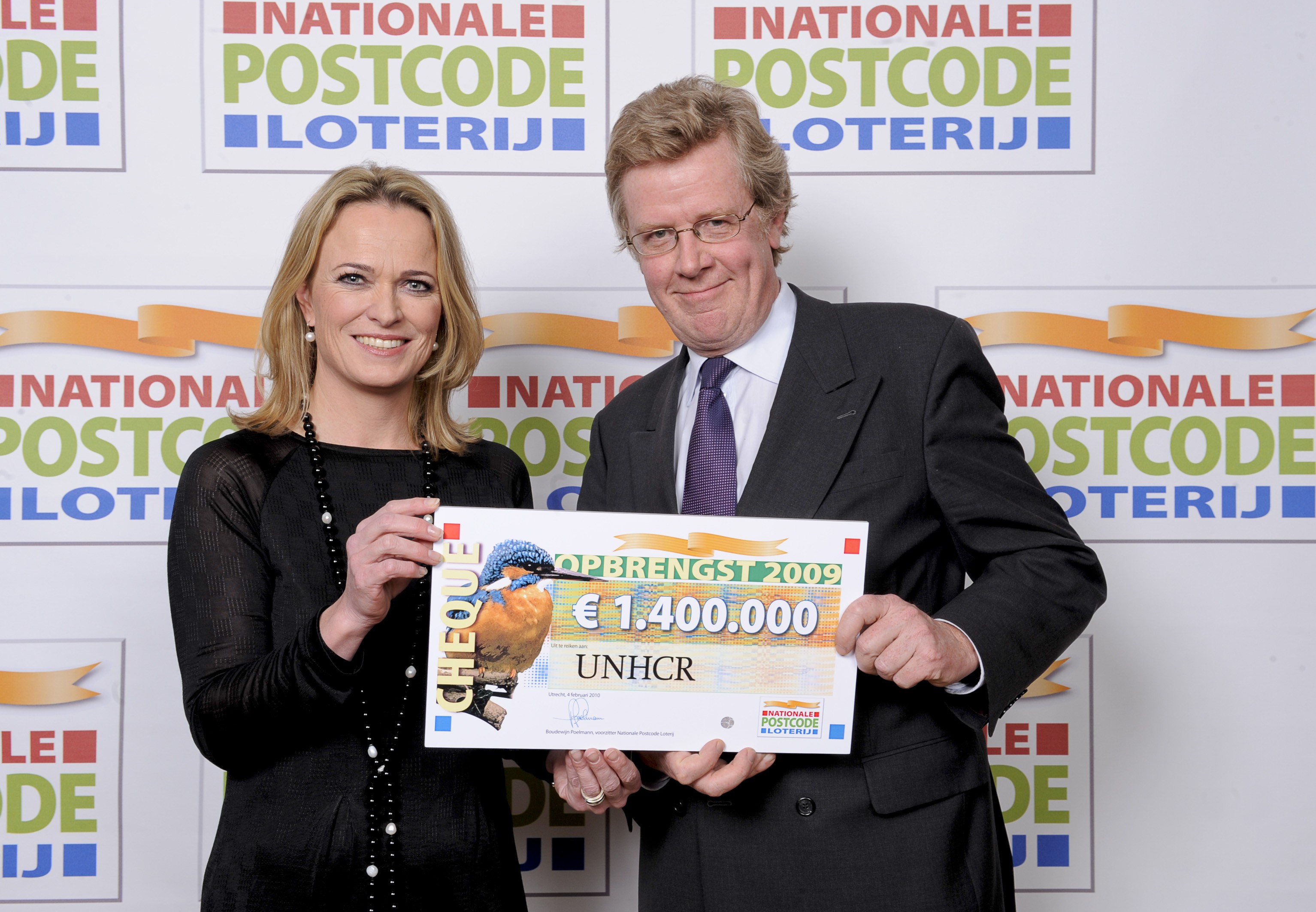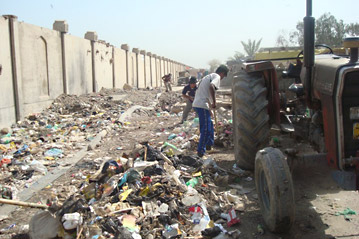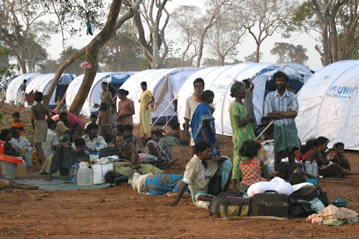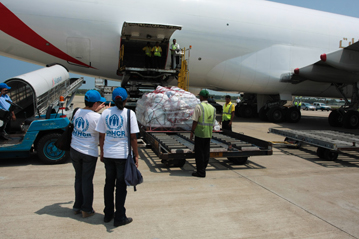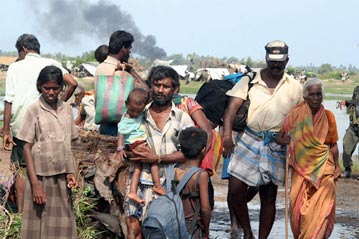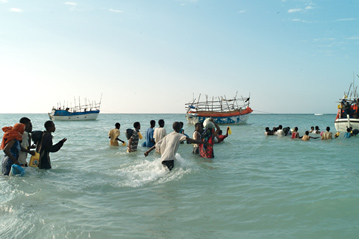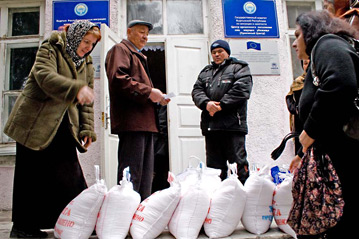"World's largest refugee camp" closes in Ethiopia
"World's largest refugee camp" closes in Ethiopia

HARTISHEIK CAMP, Ethiopia, July 1 (UNHCR) - It was once the world's largest refugee camp, hosting a quarter million Somalis in a bustling pocket of eastern Ethiopia. Today, Hartisheik camp is deserted, sitting quietly in the semi-arid border area as its last inhabitants leave for home.
On Wednesday, the last UNHCR return convoy left Hartisheik camp with 719 Somali refugees, crossing the border into Hargeisa in north-western Somalia, also known as Somaliland. They are currently living in a transit centre in Hargeisa while the authorities work to find a site where they can settle permanently.
The closure of Hartisheik camp marks a milestone in the Somali repatriation movement that has seen a total of 230,147 refugees return home on UNHCR convoys since April 1997. Many others have gone back on their own.
Hartisheik was the site to which hundreds of thousands of Somalis flocked amid the collapse of the Siad Barre government in 1988 and clan warfare in the early 1990s. The first refugees arrived in appalling conditions; many died of exhaustion, hunger and lack of water. UNHCR mobilised emergency assistance in this remote region, setting up camps, digging wells and offering medical services.
At its peak, Hartisheik hosted more than 250,000 refugees, mostly from Gabiley and Hargeisa areas in north-western Somalia. The camp bustled with a busy market where people could find almost anything they needed, from imported clothes to jogging shoes, electronic appliances and auto spare parts.

With Wednesday's closure, UNHCR plans to hand over the camp's facilities to the district government in eastern Ethiopia. They include a dam, schools, community and health centres, prefabricated warehouses as well as UNHCR's office and residence.
Of the two Somali camps left in eastern Ethiopia, Aisha camp is continuing return convoys to north-western Somalia while Kebribeyah camp hosts mostly refugees from southern Somalia, where uncertain security conditions prevent them from going home in the near future. In all, the two camps host some 24,400 Somali refugees.
But challenges remain even for those refugees who have gone back to the relative safety of Somaliland. With high unemployment, illiteracy and infant mortality rates, the region is struggling to cope with the influx of returnees.

To help returnees settle back in their home areas, UNHCR provides them with a minimum assistance of a small travel grant, blankets, sleeping mats, cooking sets, tarpaulin, hygiene materials, and food rations from the World Food Programme.
The UN refugee agency is working with partners like the UN Development Programme, the International Labour Organisation and the Danish Refugee Council to make the best use of the limited resources available to help the returnees become self-sufficient.
UNHCR needs more than $5.7 million this year for its operations in Somalia. This is part of a $118 million joint appeal launched in February by UN agencies and non-governmental organisations working in the war-torn country.


